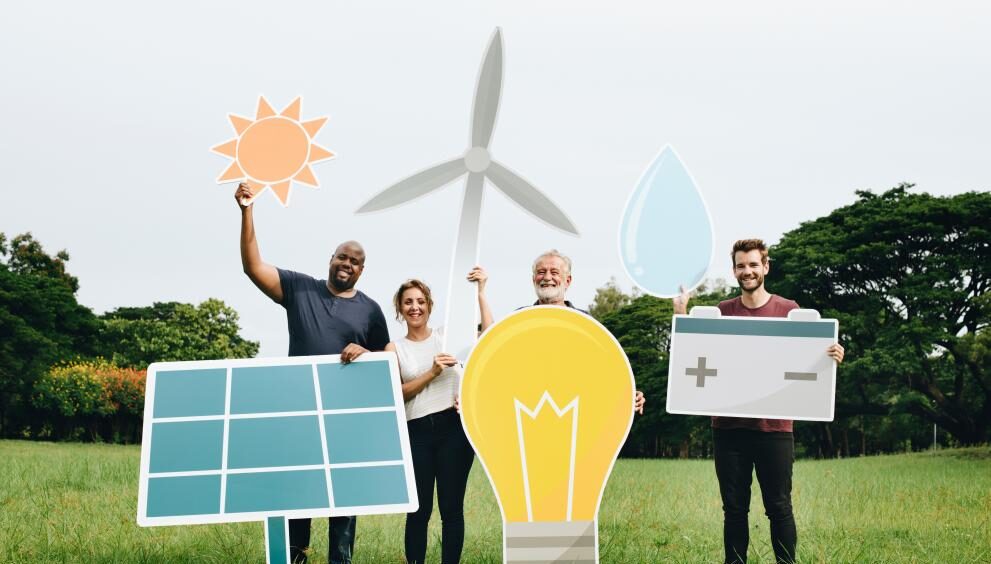Reviving Our Lands: The Role Of Renewable Energy In Preventing Desertification

“Changing climate patterns are pushing cities like Delhi to the brink of desertification, with temperatures soaring up to 50 degrees Celsius, causing severe heat stress, unprecedented water crises, and reliance on ad-hoc water tankers,” writes Shashank Sharma, Founder, Chairman and CEO, Sunsure Energy.
According to the UNCCD’s (United Nations Convention to Combat Desertification) report “Drought in Numbers 2022,” the number and duration of droughts have risen by nearly 30 per cent since 2000. Without corrective steps, droughts will affect more than three-fourths of the world’s population by 2050. A recent study by CSE shows that 70 per cent of India is experiencing drought-like conditions. Large parts of states like Maharashtra, Karnataka, and Andhra Pradesh fall into the ‘moderately dry’ or ‘extremely dry’ categories. Changing climate patterns are pushing cities like Delhi to the brink of desertification, with temperatures soaring up to 50 degrees Celsius, causing severe heat stress, unprecedented water crises, and reliance on ad-hoc water tankers.
For the longest time, we have relied on traditional sources like coal and petroleum for power. This reliance has caused a twofold problem. First, the extraction of these sources severely degrades the land, leading to deforestation, soil erosion, and biodiversity loss. For instance, coal mining in India led to the deforestation of approximately 450 square kilometres of forest cover between 2001 and 2014 (UNESCO). Second, burning fossil fuels releases vast amounts of greenhouse gases, contributing to global warming and climate change. Deforestation driven by fuel extraction accounted for about 7 per cent of global emissions in 2022, turning some forest areas from carbon sinks into net carbon sources (World Wildlife Fund). This accelerates land degradation and desertification, exacerbating drought conditions and threatening ecosystems and human livelihoods. Currently, worsening land degradation impacts 3.2 billion people worldwide, driving species extinctions and intensifying climate change (UNESCO).
If we must be true to the WED 2024 slogan, “Our Land. Our Future. We are #GenerationRestoration,” we need to expedite our transition to renewable energy sources. At this crucial environmental junction, renewable energy presents a proven alternative to reduce our reliance on fossil fuels, produce clean energy, and mitigate global temperature rise. This shift is essential for achieving a low-carbon future and providing ecosystems the opportunity to recover and thrive. Transitioning to renewable energy sources can have multiple benefits and contribute to mitigating desertification and droughts.
Minimising water use: Renewable energy technologies present a distinct advantage over conventional power plants in terms of water usage. Traditional power generation methods, particularly thermoelectric plants, rely heavily on water for cooling purposes, leading to significant water withdrawals. Most renewable energy systems, such as wind and solar photovoltaic, require minimal water during operation (mostly for cleaning purposes). This minimal water footprint is beneficial for the water table, especially in arid and semi-arid regions where excessive water usage can exacerbate desertification and pressure neighbouring water bodies. Thus, adopting renewable energy not only addresses our energy needs but also aids in water conservation, making it a sustainable choice.
Soil Conservation: Coal mining and petroleum extraction, in their efficiency, strip the earth bare, leaving behind a desolate landscape. These processes drastically alter our natural topography and disrupt the intricate web of life within it. Additionally, the dust and harmful gases like sulfur dioxide and nitrogen oxides released during coal mining pollute the air, exacerbating climate change and impacting human health and the environment. Renewable energy installations, particularly solar panels, play a pivotal role in soil conservation, an often overlooked aspect of sustainability.
Future of energy generation
The very nature of renewable technologies allows us to work in harmony with the environment rather than against it. For example, industrial-scale solar rooftop plants are known to offset 20 per cent of an average factory’s conventional energy needs without requiring additional land. The future looks promising as more industries adopt renewable energy solutions, reducing their carbon footprint and aiding in the fight against desertification.
When you consider that up to 40 per cent of the planet’s land is already degraded, directly affecting half of the world’s population and threatening roughly half of global GDP (USD 44 trillion), the choice for each of us to take significant steps towards a balanced and sustainable future becomes clear. If we must be true to the WED 2024 slogan, “Our Land. Our Future. We are #GenerationRestoration,” transitioning to renewable energy sources is not just an option but a necessity for the sustainable future of our planet.
About The Author- The author of this article – Shashank Sharma is the Founder, Chairman and CEO at Sunsure Energy.




































































































































































































































































































































































































































































































































































































































































































































































































































































































































































































































































































































































